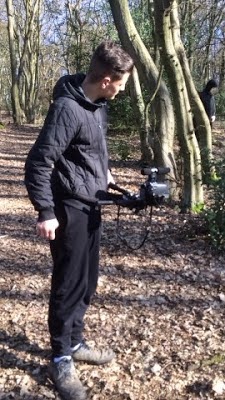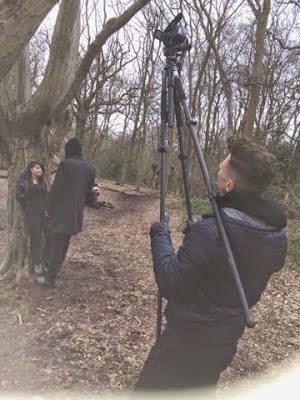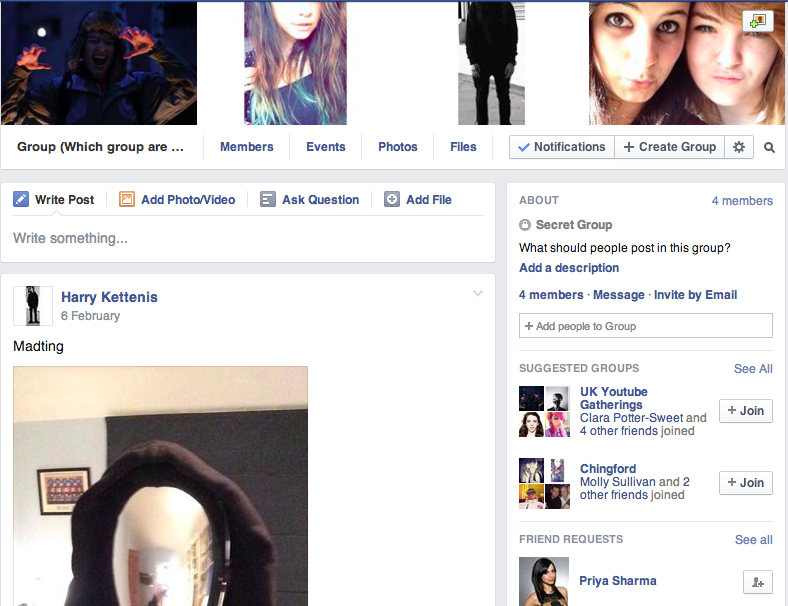As a group, we made informed decisions on our use of conventions within genre, narrative structure form and style, which I will explain below.
Our film is about a woman called Leora who creates a time-travel device for a company called Synergy, but she realises that they intend to use it for immoral purposes. This prompts her to flee, which causes Synergy to send the Henchman after her. This is where the film starts.
Genre
Our film is predominantly a sci-fi film, with the sub-genre of adventure, due to having both time-travel and chase and fight scenes within the film.
Conventions of genres in our opening:
- it begins with running scene, which is a convention of action films, as chase scenes add excitement to the film. An example of a chase scene similar to ours is the forest chase from Harry Potter And The Deathly Hallows, which is a fantasy and adventure film, which are similar genres to our film.
- our opening has time travel in it, which conforms to the sci-fi genre, as this is a common motif in sci-fi or fantasy films - our character Leora has created a time device, and uses at the end of the opening. An example of a film that also focuses on time travel in particular is Looper, and the film also opens with a character jumping back in time.
- the grading of our opening fits the convention of being more blue, like other sci-fi films, as the blue connotes technology and is commonly associated with sci-fi films. An example of a film with similar colouring to ours is Alien, which is graded to be more blue and more contrasting, which we tried to achieve in our opening.

- our opening, however, does break the conventions of most action films by having a female protagonist (Leora). This is uncommon in action films, although our character is similar to other female leads from action films that also break this convention, like Lara Croft from Tombraider.

In deciding our narrative structure, we used an number of relevant theories for reference:
- Todorov's theory: having an equilibrium - disruption - hero's journey - new equilibrium. However, we decided to change this slightly, and start with a disruption - Leora being chased by the Henchman/Synergy.

- Propp's theory: the 8 character roles (villan, hero, donor, helper, princess, father, dispatcher, flase hero).In our film, we incorporated some of Propp's character roles; the villain(s) - Synergy and the Henchman, the hero - Leora, the princess - Adam

Leora - hero Henchman - villan - Levi-Strauss' theory: binary opposites.In our film we have the contrast between good and evil (Leora and Synergy), past and present (2014 and 2071), known and unknown (Leora's present and when she jumps back)
Form
We decided to conform to the usual form of film openings, as this ensured our audience would understand our film opening.
As shown below, we made sure to introduce institutions, such as the production companies, as well as introducing characters and settings, before introducing the disruption of the film. This made sure that the audience knew exactly what was happening.
 |
| A diagram to show how our opening is similar to films of the same genre; in this case, Looper. |
Style
For our opening, we referenced multiple films to decide on what look we wanted to achieve for our film.
Grading
We decided to make our film more blue, cold and contrasting, as this is a convention of the sci-fi genre. We drew inspiration from other sci-fi films, such as Blade Runner, Star Trek and The World's End.

 We decided that in order to show the difference between 2071 and 2014 (so the audience could distinguish between them) we graded each differently - the future is more blue and 2014 is much pinker and warmer, which also connotes Leora's apparent safety.
We decided that in order to show the difference between 2071 and 2014 (so the audience could distinguish between them) we graded each differently - the future is more blue and 2014 is much pinker and warmer, which also connotes Leora's apparent safety.Titles
Our titles are in a simple, white font, which is similar to other sci-fi films that we referenced, such as Looper, or Attack The Block.


We also drew inspiration from Zombieland, as we wanted to replicate the interactive nature of the titles:

Editing, Sound And Camera
We decided to have fast paced editing for the chase scenes, as this reflected the frantic atmosphere of the chase. This also mirrored the editing of films of a similar genre, such as Point Break, which was a main source of inspiration:
We also drew inspiration from this chase scene in terms of shot types; for example, when the camera follows behind the characters, or characters running towards the camera.
Our soundtrack is also inspired by chase scenes from films of a similar genre - it is fast paced to match the action, as well tension building during the confrontation between Leora and the Henchman. This causes the audience to feel as panicked as Leora.































